Marketplaces have overtaken brand sites and etailers as the leading destinations for shoppers, but social commerce could be about to leapfrog them all and dominate e-commerce.
According to a recent report by ChannelX, 35% of all online purchases are now made on marketplaces, with just 12% coming from retailer-branded sites. A separate report by Statista predicts that the fastest-growing sector within marketplaces will be social commerce, achieving annual growth of 31.6% and reaching $6 trillion by 2030.
In this article, we look at:
What is social commerce and why is it growing so quickly?
What is frictionless commerce?
How TikTok has added shoppable links to videos and LIVE streams
Why Meta has plugged Facebook checkout into Facebook and Instagram
How Instagram allows brands and businesses to harness the power of UGC
How Pinterest integrates shopping across the board
Who will win the race to dominate social commerce?
How to take advantage of the opportunities of social commerce by managing multichannel complexity
The market share of marketplaces globally has grown 500% since 2007 and will, reportedly, account for almost 60% of online sales by 2027. Anyone who doubts this statistic should look at China, the trailblazer for marketplaces and social commerce, where marketplaces sales already account for 80% of total e-commerce sales (based on 2023 sales data).
According to the report, “The move towards buying on marketplaces has been driven by convenience, competitive pricing, choice and ease of use.”
Of the Largest 100 online retailers across Europe, 62% are marketplaces of one form or another.
https://channelx.world/2023/10/european-marketplaces-report-2023/
The evolution of social media platforms into social commerce marketplaces
In the beginning, retailers sold only their own products, and marketplaces, like eBay, sold only other people's products. Social media platforms came along later and didn't sell anything. But they attracted users, and therefore advertisers.
Brands were able to take advantage of all of these channels and to sell direct to customers from their own websites.
In recent years, the lines between these propositions became blurred. Pureplay marketplaces have seen the benefit of offering own-branded items in popular categories, and are rapidly turning themselves into online retailers.
With the emergence of platforms, like Mirakl and Marketplacer, retailers and brands have been able to add marketplaces functionality to their own sites and include third-party sellers in their proposition to customers.
Retail giants, like Walmart, Macy’s and Boots, have taken advantage of this opportunity and an increasing number of massive global marketplaces has emerged.
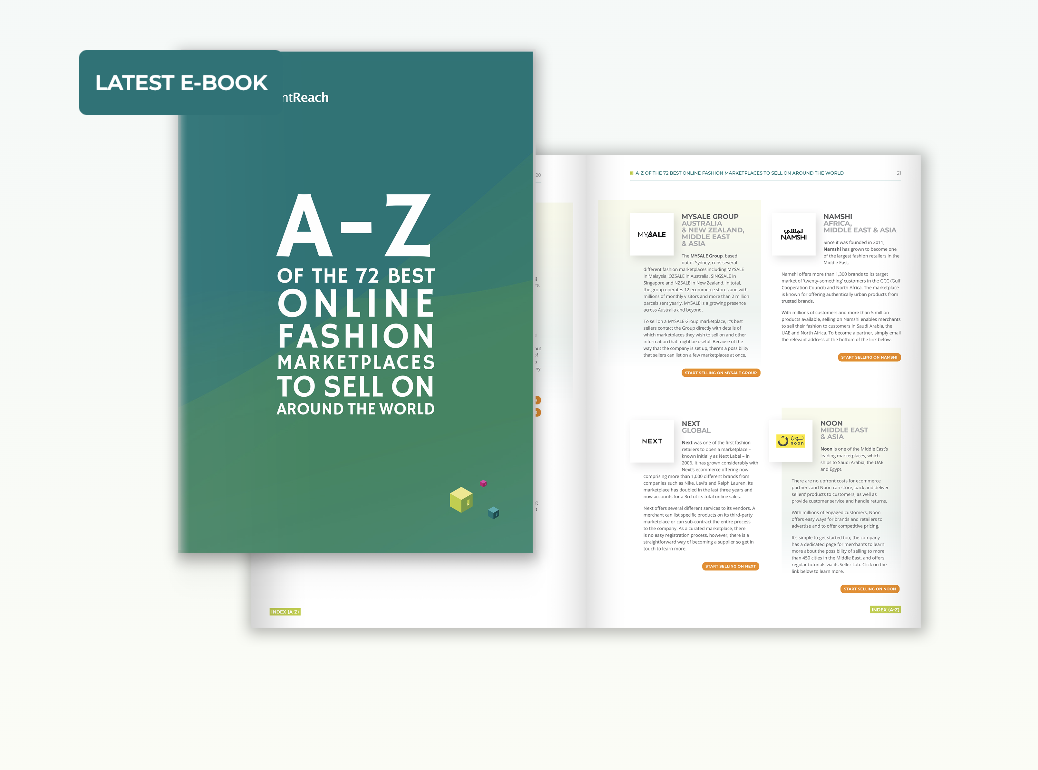
Now, with the Introduction of shops and shoppable links, on every possible surface, Facebook, Instagram, TikTok and WeChat are presenting themselves as social commerce platforms and are starting to mirror the universal checkout and fulfilment services offered by marketplaces.
What is social commerce?
Social commerce refers to transactions on social media sites where a user discovers and buys the product, without ever leaving the platform. Social commerce is similar to marketplaces in that the platform manages the discovery and the check-out process, and frequently the logistics and delivery as well.
Marketplaces are growing fast, but social commerce is growing even faster
According to a report by Statista, social commerce is growing at a rate of 32% each year.
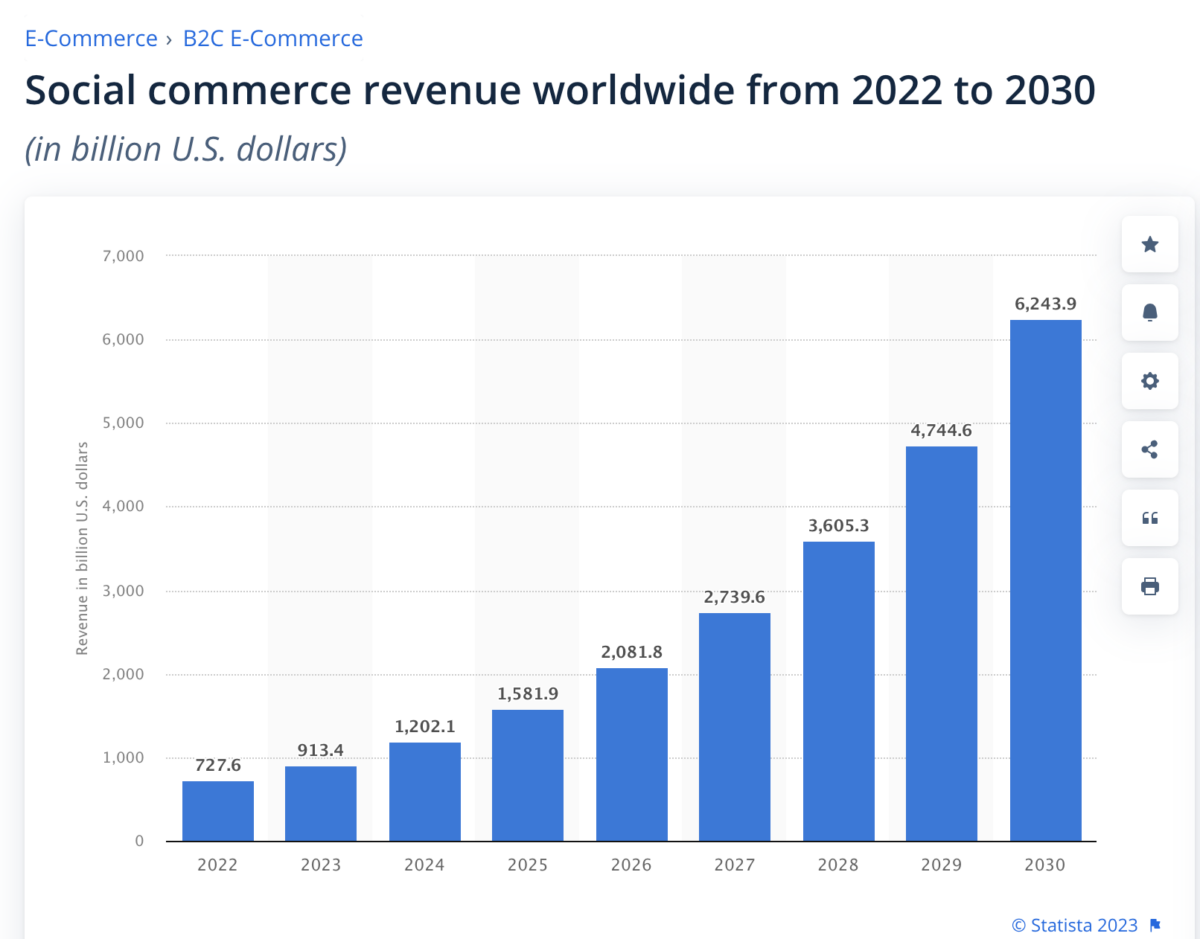
ChannelX data states that 17% of online purchases globally are now made through social media apps. And this is likely to increase as TikTok, Facebook and Instagram continue to embed new shopping functionality into their apps.
Social media sites are striving to offer the same core proposition as marketplaces, and they have an important advantage. They are incredibly sticky.
Social commerce sites are frictionless and sticky
According to recent stats from Smart Insights:
- 4.80 billion people around the world now use social media.
- The average daily time users spend on social media is 2h 24m.
It is widely recognised that social media apps are sticky, perhaps even addictive. But how can they be frictionless as well?
What is frictionless commerce?
Frictionless commerce is, simply, shopping that is incredibly easy. Product discovery is effortless, everytying happens in your favourite environment, and there are no barriers to checking out. The full shopping list looks something like this:
- There is only one shopping basket.
- Users can click on any product image or product video to add any item to their basket.
- Users can add products from multiple sellers.
- Users can check out without leaving the platform.
- Influencers, including everyday users, can add shoppable links to their own images and videos.
Not every one of these features is available on every social media platform, in every country. But each of the big social media platforms is rolling out some version of it in their apps:
TikTok app adds a shop button in the US and supports Shops with native ad formats
Despite some recent setbacks, TikTok is still pioneering the idea of social commerce and is turning its platform into a one-stop shop. With its latest rollout in the US, TikTok provides users (and brands) with shoppable links throughout the app. The rollout includes a universal shopping basket, a logistics solution under the “Fulfilled by TikTok” banner, and a simple, secure checkout procedure.
TikTok says it has signed up more than 200,000 sellers for its Shop product and more than 100,000 creators to the associated Affiliate programme.
TikTok has added shoppable links to videos and LIVE streams
Users of the latest version of TikTok in the US are now able to:
1.Shop directly from a shoppable in-feed video by tapping the product link and basket icon.
2. Shop directly from a LIVE stream by tapping the pinned products and browsing the shopping basket icon.
3. Shop directly from a branded shop, or product creator account, and access all the brand's products within the app.
4. Checkout from a single basket, without ever leaving TikTok.
Meta plugs Amazon checkout into Facebook and Instagram
Meta’s big initiative is to integrate one giant shop into its platform, in addition to thousands of little ones.
In the US, it has introduced a feature that allows users to connect their Facebook and Instagram accounts seamlessly to Amazon, so they can buy Amazon products directly from Amazon feeds.
An Amazon spokesperson emphasised that the deal is an opportunity for customers, as well as for Meta, Amazon and its advertisers, stating: "For the first time, customers will be able to shop Amazon’s Facebook and Instagram ads and check out with Amazon without leaving the app. Customers in the US will see real-time pricing, Prime eligibility, delivery estimates, and product details on select Amazon product ads in Facebook and Instagram as part of the new experience."
Meta is also planning a raft of features to support Shops on Facebook and Instagram
New tools, to support Meta shops, will include ratings, reviews, buyer email opt-in, as well as dynamic product pages to boost discovery and improve connection with customers.
Meta also hopes to bring users and advertisers closer together with a new feature that allows likes and comments (UGC) to be embedded in sellers’ product pages:
How does Instagram plan to allow brands and businesses to harness the power of UGC?
Consumers increasingly look for reassurance from other buyers when purchasing products. With the addition of simple-to-source UGC, Instagram believes brands will be able to deliver marketing that is more authentic because it is based on reviews by real people, interacting with real products.
When a user likes a brand or product, merchants will be able to display those likes against products in their shops, through a built-in process for requesting, and receiving, users' permission.
Pinterest integrates shopping across the board
Pinterest claims that shopping is now seamlessly integrated across all of its core surfaces and that 55% of users now see Pinterest as a place to shop.
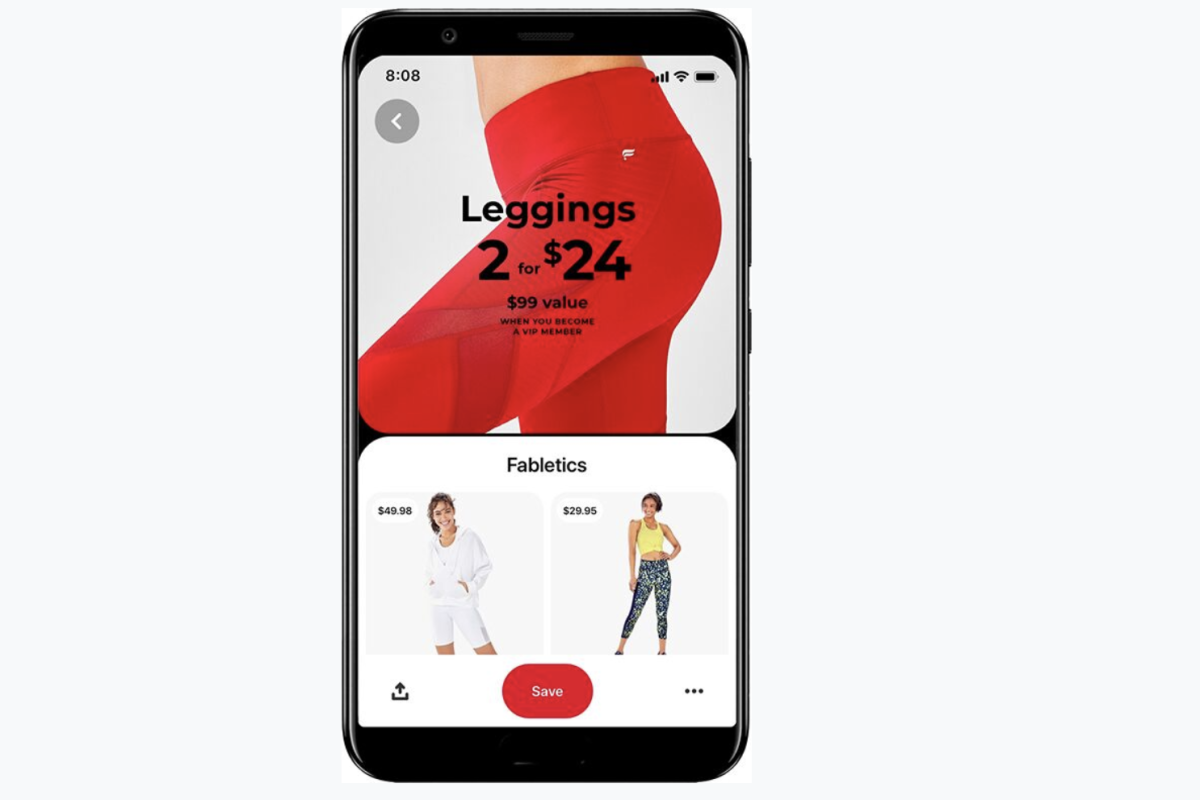
The company recently introduced mobile deep links for Pinterest advertisers and is now adding direct links so shoppers can go directly from discovery to purchase. Like Meta, Pinterest also announced a tie-up with Amazon. But buyers are required to link out from Pinterest to make purchases, so these latest developments could more accurately be described as integrated advertising, rather than social commerce.
The Pinterest-Amazon partnership
Ads on Pinterest are image-based and are designed to look like part of the natural image-browsing experience. Historically, Pinterest has worked directly with businesses to create ads for the platform. The tie-up with Amazon will bring third-party ads to the platform for the first time.
Who will win the race to dominate social commerce?
TikTok has the most complete-looking social commerce solution right now. But in terms of its user base and revenue, Meta, which owns Facebook and Instagram, is a long way ahead.
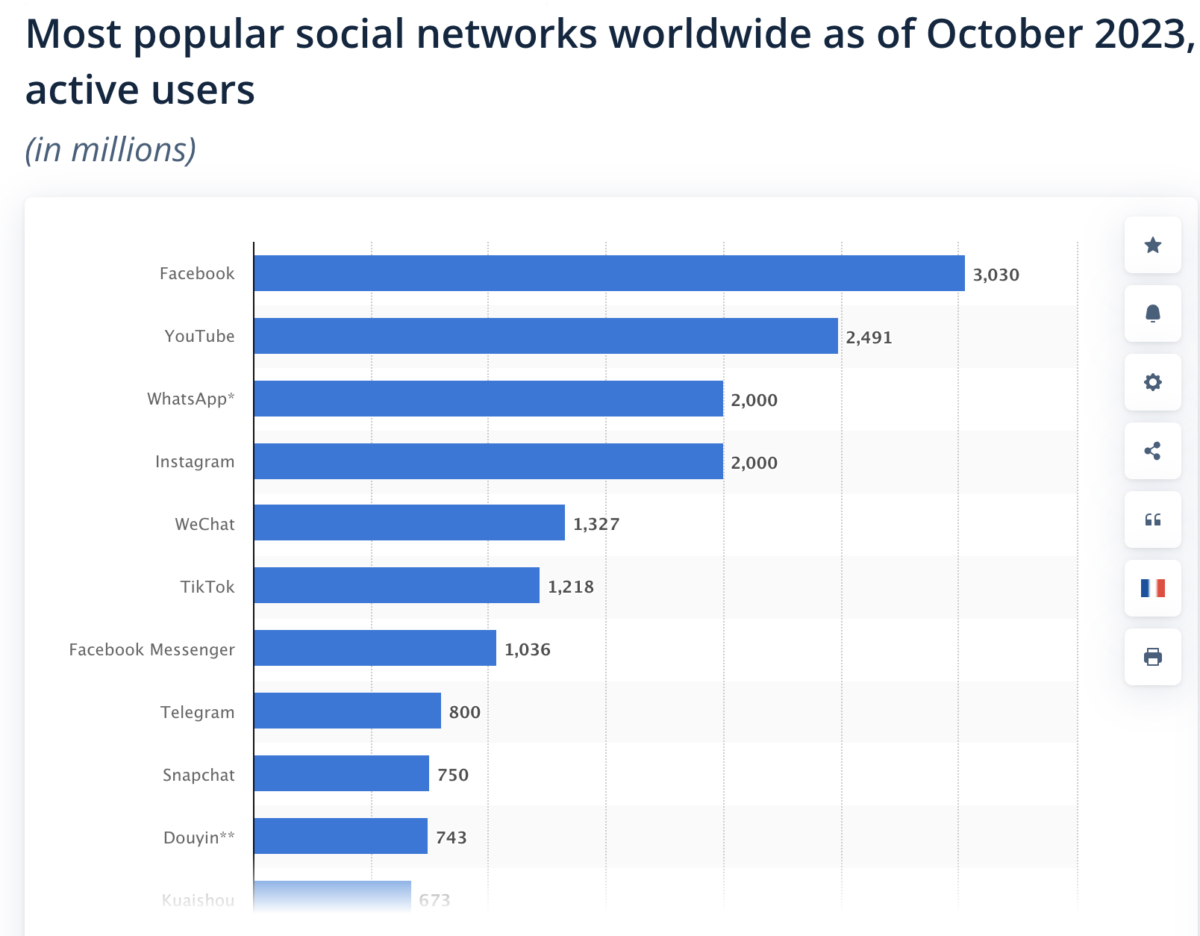
Meta has made a bold move by integrating Amazon’s checkout. It is also deeply committed to Shops and in-app purchasing. So much so that, in the US, it is removing the option for merchants with Facebook and Instagram shops to link out to their own e-commerce websites.
Meta claims that Shops that allow users to make purchases entirely within the Facebook and Instagram platforms deliver better results. So new shops in the US now have no option but to sign up to Fulfilment by Facebook / Fulfilment by Instagram and enable in-app shopping.
And if in-app purchasing is better for users, and for the platforms, then brands that want to take advantage of social commerce are going to have to accept it, and deal with the complexity.
How to take advantage of the opportunities of social commerce by managing multichannel complexity
Social commerce, like marketplaces, represents a huge opportunity for brands looking to grow their businesses. They have huge audiences and they allow customers to shop on the platforms they prefer.
Social commerce is also a big threat to brands because it introduces a new level of complexity. As with marketplaces, social commerce sales take place in third-party environments, rather than on the brand's own e-commerce site. So brands have to manage orders across multiple channels, synchronise stock information, manage logistics and inform each channel about deliveries and returns, and to manage and optimise product data across every channel.
The Intelligent Reach Marketplaces Module -
The best way to manage the additional complexity of selling on marketplaces and social media commerce platforms is via a data management platform that is designed specifically for marketplaces. The Intelligent Reach product data marketplaces module helps brands and retailers:
- Receive orders from marketplaces and social media channels, and manage stock and order status across each channel.
- Synchronise shipping updates and refunds.
- Decide which products are right for each channel and curate them.
- Manage product-level data and monitor the performance of every product, in every channel.
- Manage multiple formats of creative across multiple channels
- Optimise product data across channels.
- Ensure a flawless multichannel shopping experience for customers.
But don't just take our word for it. Here is what our customer Dhruv Arora, E-Commerce Specialist at Asics, had to say:
"This software makes it so easy to control all marketplace channels through one platform. It's easy to make changes to products/product feed via setting up rules and exclusions and the presence of performance reports gives us better insight into product performance."
Learn more about the Intelligent Reach Marketplaces Module.
FREE GUIDE TO MARKETPLACES
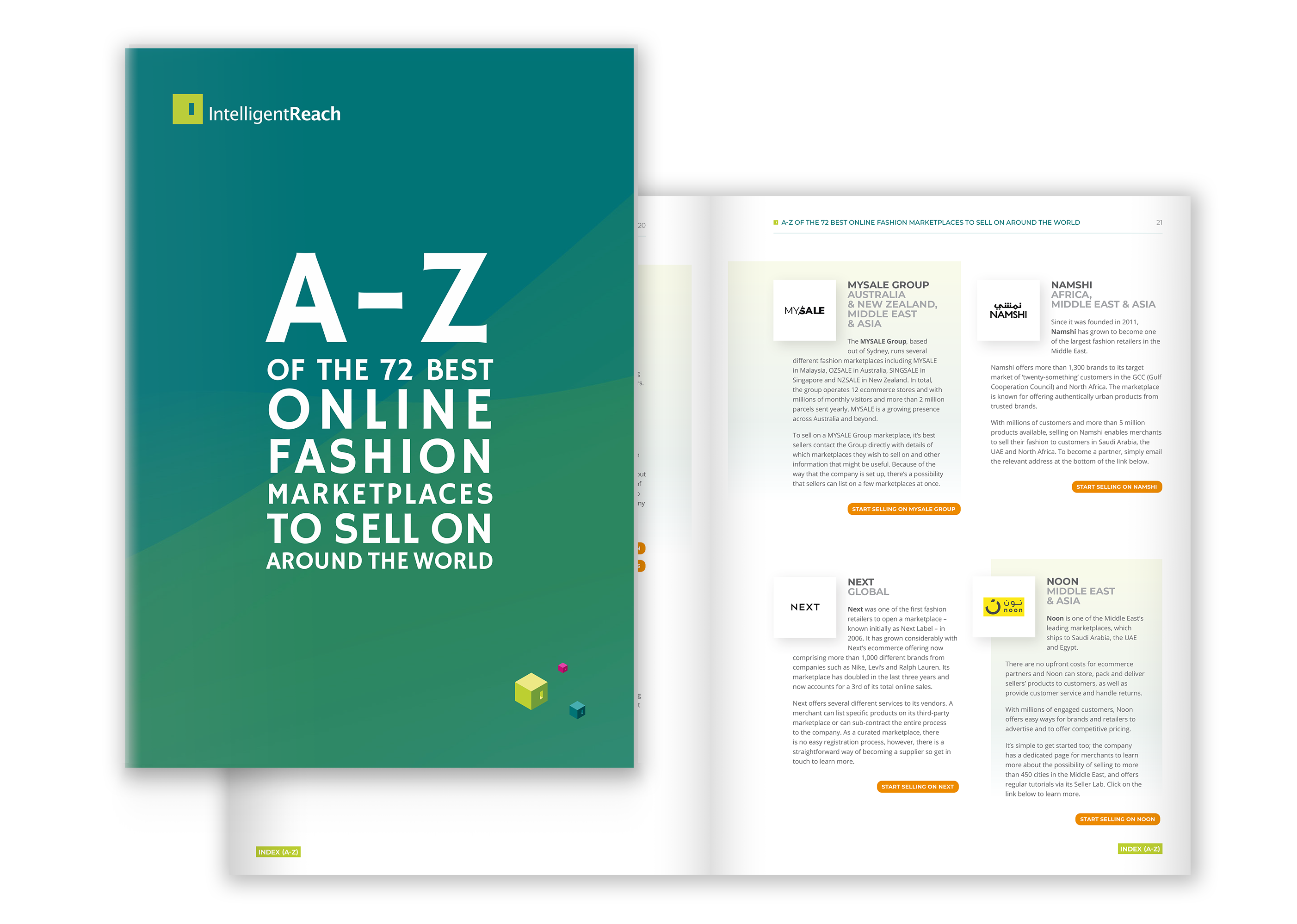












 River Island
River Island